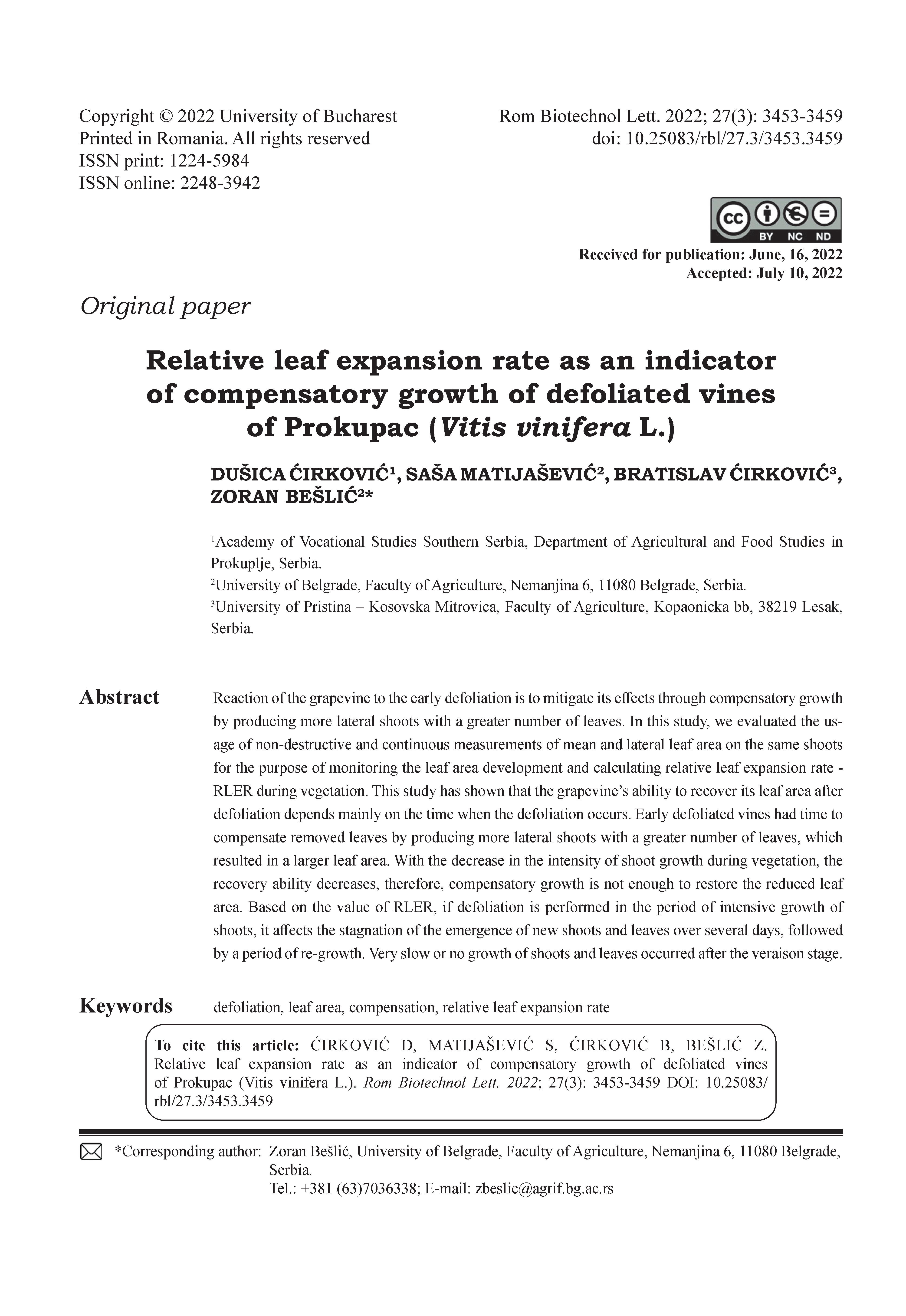Relative leaf expansion rate as an indicator of compensatory growth of defoliated vines of Prokupac (Vitis vinifera L.)
DOI:
https://doi.org/10.25083/rbl/27.3/3453.3459Keywords:
defoliation, leaf area, compensation, relative leaf expansion rateAbstract
Reaction of the grapevine to the early defoliation is to mitigate its effects through compensatory growth by producing more lateral shoots with a greater number of leaves. In this study, we evaluated the usage of non-destructive and continuous measurements of mean and lateral leaf area on the same shoots for the purpose of monitoring the leaf area development and calculating relative leaf expansion rate - RLER during vegetation. This study has shown that the grapevine's ability to recover its leaf area after defoliation depends mainly on the time when the defoliation occurs. Early defoliated vines had time to compensate removed leaves by producing more lateral shoots with a greater number of leaves, which resulted in a larger leaf area. With the decrease in the intensity of shoot growth during vegetation, the recovery ability decreases, therefore, compensatory growth is not enough to restore the reduced leaf area. Based on the value of RLER, its defoliation is performed in the period of intensive growth of shoots, it affects the stagnation of the emergence of new shoots and leaves over several days, followed by a period of re-growth. Very slow or no growth of shoots and leaves occurred after the veraison stage.





